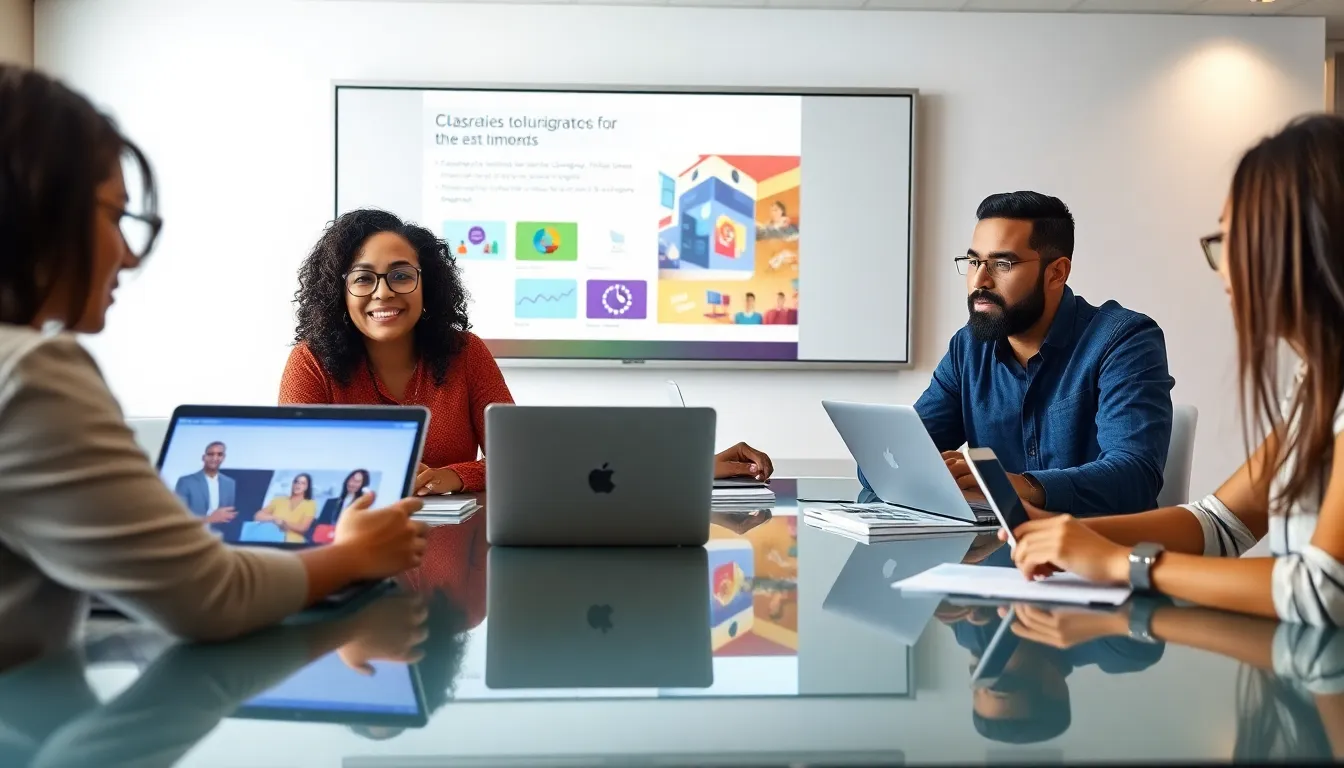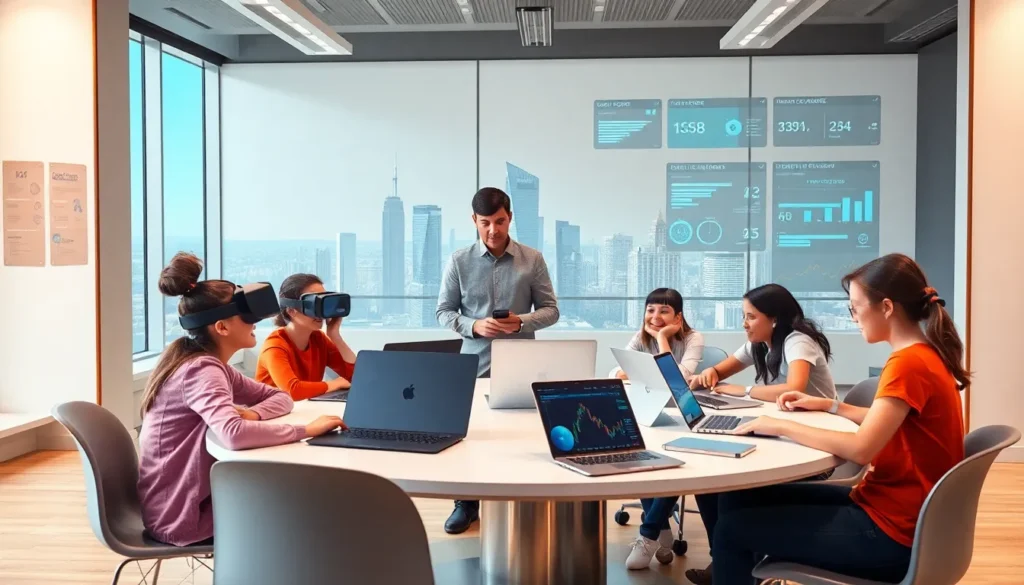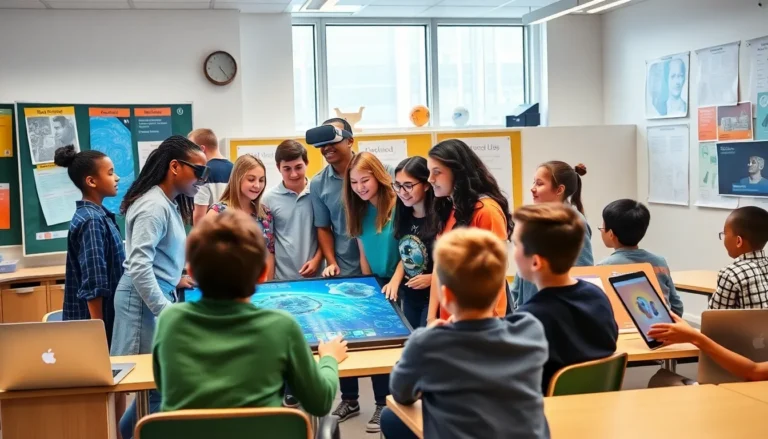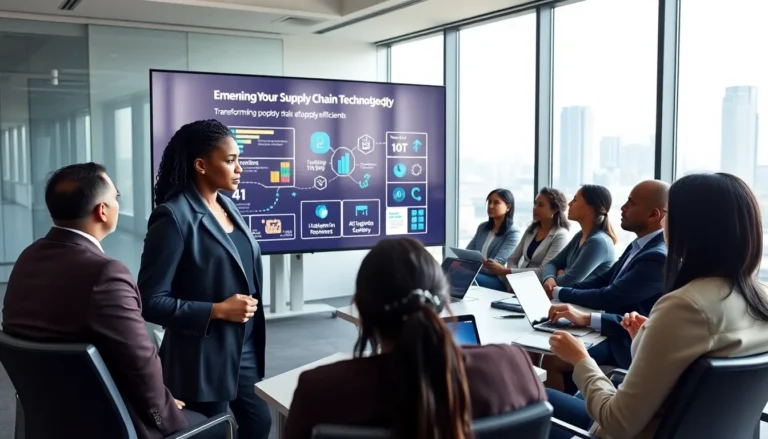Table of Contents
ToggleIn a world where dinosaurs roamed the earth only a few thousand years ago (just kidding, of course), technology has leapt forward at a staggering pace. Today, if you want to keep your head above water in the educational pool, it’s essential to jump into the sea of emerging learning technologies. Think of them as your personal floaties, helping you navigate the currents of modern learning. These innovations don’t just enhance the educational landscape, they’re redefining it. In this text, we’ll take a deep jump into the nuances of these technologies, their significance, and what the future holds. Ready to turn your educational boat around? Let’s go.
Overview of Learning Technologies

Learning technologies refer to a range of software, tools, and systems designed to help learning experiences and improve education outcomes. Since the advent of the internet, educational tools have evolved to encompass everything from basic digital textbooks to sophisticated artificial intelligence-driven platforms. Understanding the breadth of these technologies is crucial because they play a significant role in how content is delivered, how engagement is fostered, and how assessment is conducted.
Also, the landscape is constantly changing, as new technologies emerge and integrate into traditional learning environments. This evolution presents both opportunities and challenges that educators and institutions must navigate.
The Importance of Learning Technologies in Education
Learning technologies are more than just flashy novelties: they are vital to modern education. First, they enhance accessibility. Students can access materials anytime and anywhere, breaking geographical barriers that once limited learning.
Besides, these technologies promote personalized learning. Every student is different, and learning technologies allow for customization tailored to individual needs. This means students can learn at their own pace, targeting areas needing improvement and accelerating through concepts they grasp easily.
Also, they foster collaborative learning. Platforms encourage communication and interaction among students, often leading to richer discussions and diverse perspectives. As a result, learning becomes a shared experience rather than a solo try. Learning technologies are no longer optional: they are essential to providing a comprehensive educational experience.
Key Emerging Learning Technologies
Several cutting-edge technologies are revolutionizing education today.
Artificial Intelligence in Learning
Artificial Intelligence (AI) is on the frontline of educational technology. It can analyze students’ learning patterns and provide tailored resources to improve understanding. Imagine an AI tutor that changes its lessons based on how well a student performs, this personalization can improve learning outcomes significantly.
Virtual and Augmented Reality Applications
Virtual Reality (VR) and Augmented Reality (AR) transform traditional learning environments by immersing students in dynamic, interactive experiences. Whether exploring the depths of the ocean or walking through ancient civilizations, these applications allow educators to present lessons in engaging ways, making learning memorable.
Adaptive Learning Systems
Adaptive learning platforms use algorithms to adjust the learning pathway based on individual student performance. This system ensures that students stay challenged but not overwhelmed, promoting a more effective learning experience.
Gamification and Learning Platforms
Gamification applies game elements to educational contexts, making learning more enjoyable and motivating. By incorporating challenges, points, and rewards, educators can encourage student engagement, leading to a more enthusiastic approach to learning.
Blockchain in Education
While often associated with cryptocurrency, blockchain technology has significant implications for education. It can provide a secure, immutable method for verifying academic credentials and achievements, thereby simplifying the administration’s enrollment and credentialing processes.
Impact on Teaching and Learning
Emerging learning technologies profoundly impact both teaching and learning dynamics. Teachers now serve as facilitators rather than mere dispensers of knowledge. With the help of technology, they can focus on fostering critical thinking and collaboration skills among students.
On the other side, students become active participants in their education, engaging more deeply with the material. They are encouraged to take ownership of their learning journey, resulting in increased motivation and better retention of knowledge. Such transformations in roles not only enrich the educational experience but also prepare students for the demands of the modern workforce.
Challenges and Considerations
While the benefits of emerging learning technologies are compelling, they come with challenges. The digital divide remains a critical issue: not all students have equal access to the necessary devices or high-speed internet. This inequity can lead to disparities in learning opportunities.
Also, the rapid pace of technological change may lead to information overload for both teachers and students. Educators must continually adapt to new tools and methodologies, which may feel overwhelming. There is also the concern about data privacy and security. Ensuring students’ personal information remains secure is paramount, necessitating that educational institutions prioritize cybersecurity measures.
The Future of Learning Technologies
Looking ahead, the future of learning technologies appears bright but is not without its uncertainties. Virtual and augmented reality will likely become more integrated into the core curriculum, providing immersive learning experiences that traditional methods cannot match. Besides, as AI continues to evolve, its applications in personalized education will expand, allowing for even more tailored learning experiences.
Collaboration among education stakeholders, schools, technology developers, and policymakers, will be essential for harnessing these technologies effectively. Also, continued focus on equity in access will ensure that all students can benefit from these advancements.





